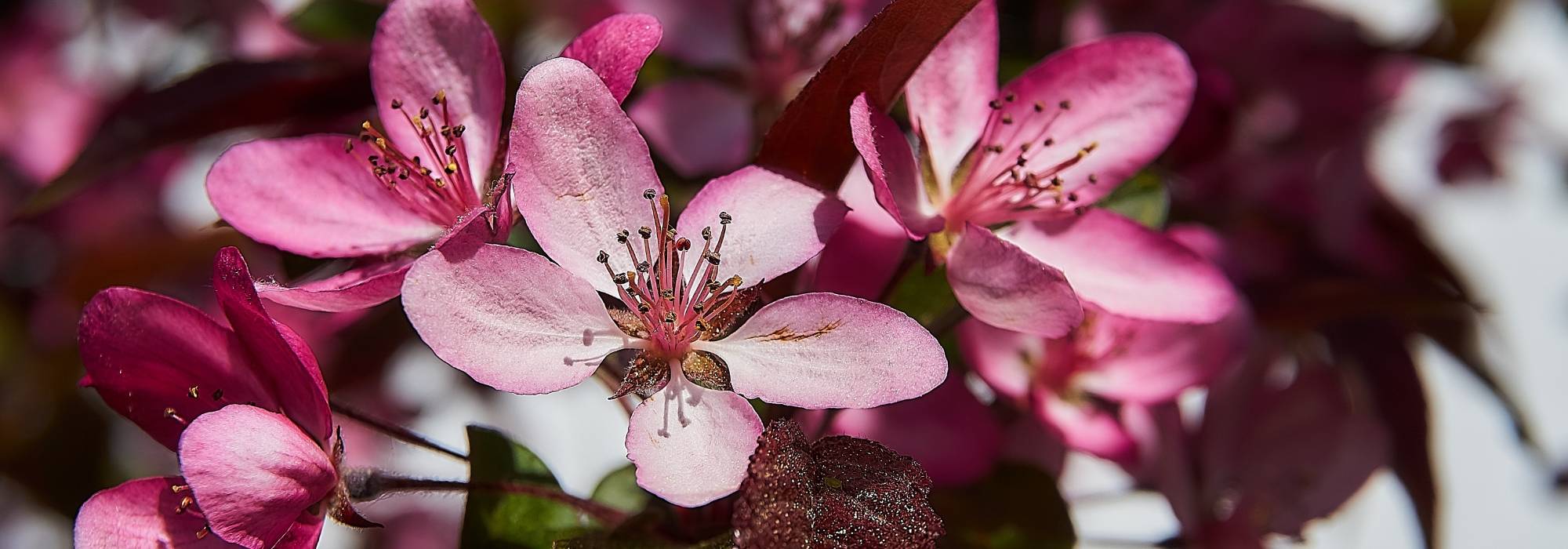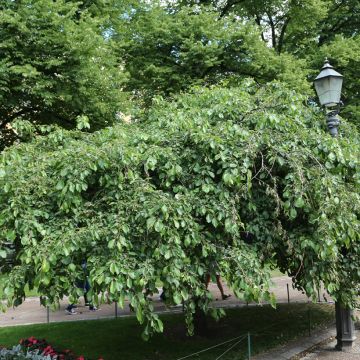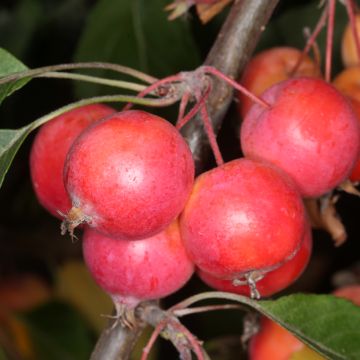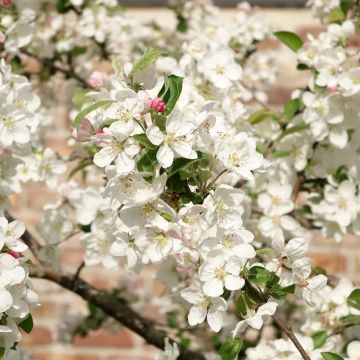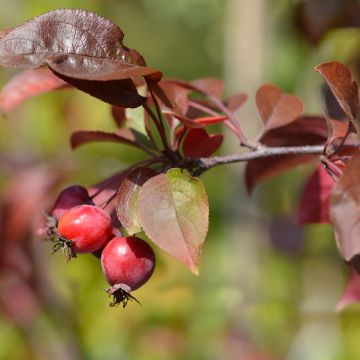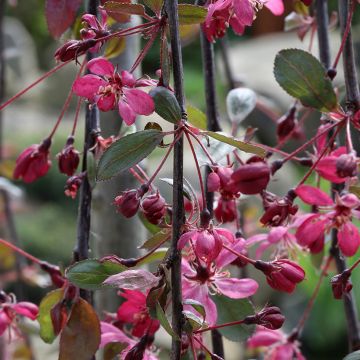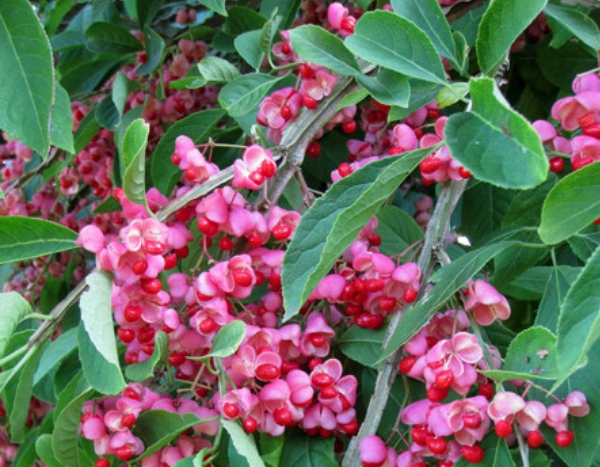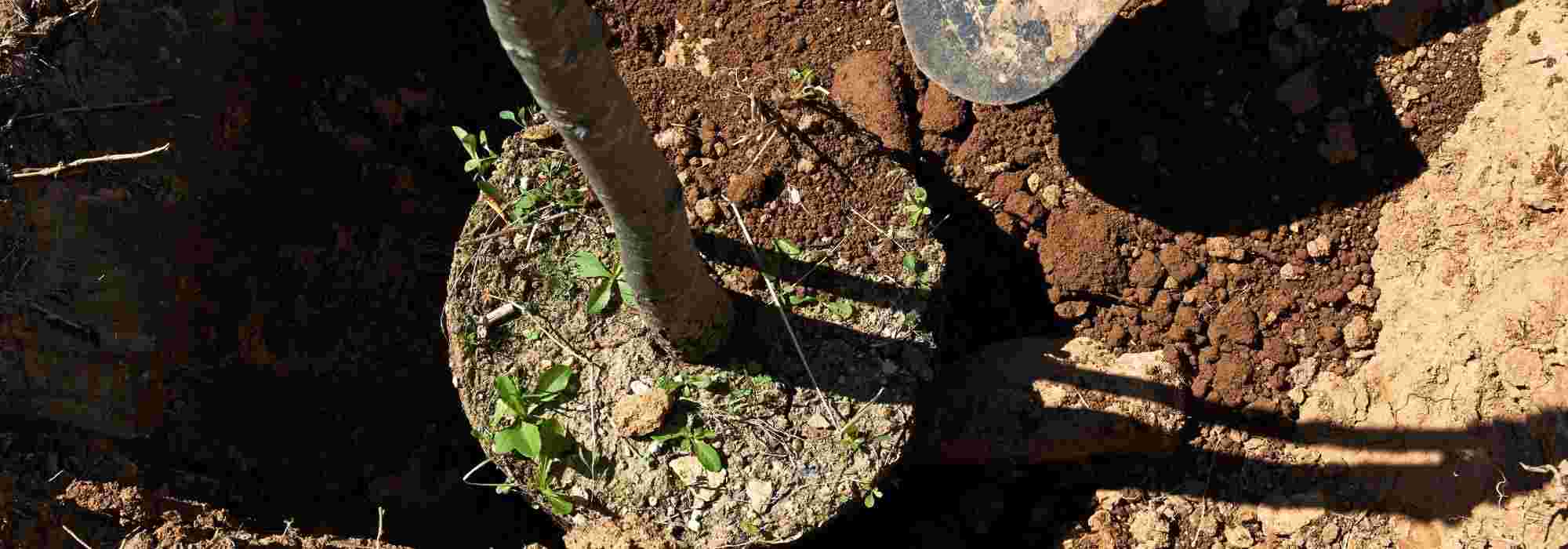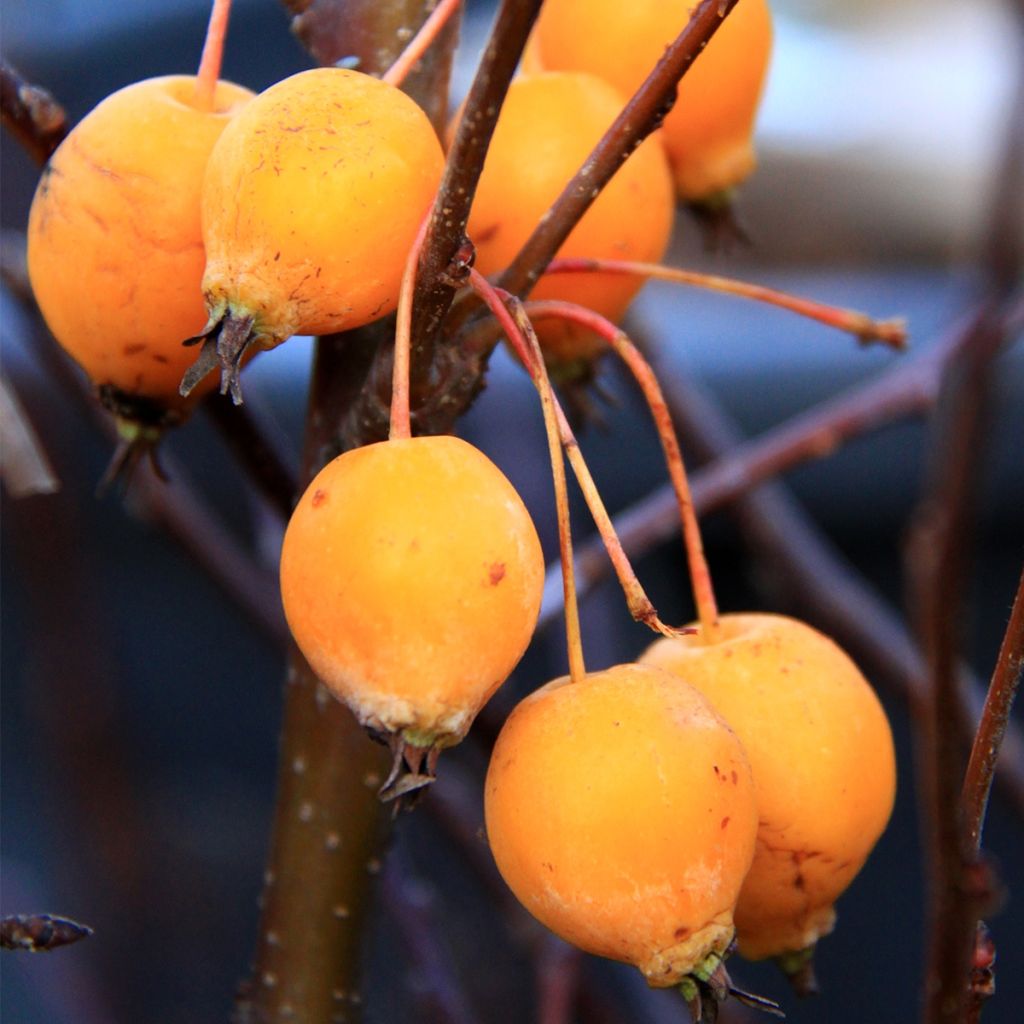

Malus Comtesse de Paris - Crab Apple
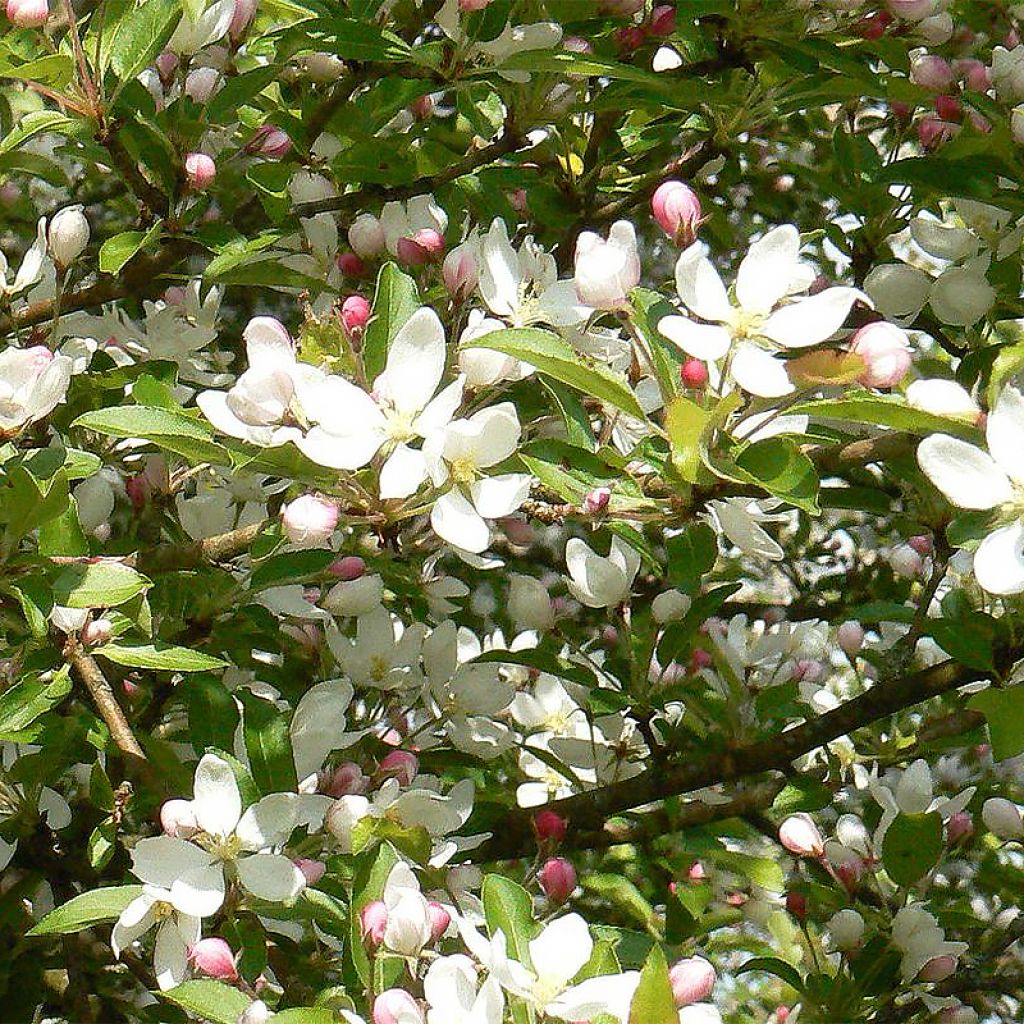

Malus Comtesse de Paris - Crab Apple
Malus Comtesse de Paris - Crab Apple
Malus Comtesse De Paris
Apple Tree, Crab Apple
Very satisfied
Annick, 03/03/2024
Special offer!
Receive a €20 voucher for any order over €90 (excluding delivery costs, credit notes, and plastic-free options)!
1- Add your favorite plants to your cart.
2- Once you have reached €90, confirm your order (you can even choose the delivery date!).
3- As soon as your order is shipped, you will receive an email containing your voucher code, valid for 3 months (90 days).
Your voucher is unique and can only be used once, for any order with a minimum value of €20, excluding delivery costs.
Can be combined with other current offers, non-divisible and non-refundable.
Home or relay delivery (depending on size and destination)
Schedule delivery date,
and select date in basket
This plant carries a 24 months recovery warranty
More information
We guarantee the quality of our plants for a full growing cycle, and will replace at our expense any plant that fails to recover under normal climatic and planting conditions.
Would this plant suit my garden?
Set up your Plantfit profile →
Description
Malus 'Comtesse de Paris' is a superb ornamental apple tree that forms a large bush or a small tree over time. In April, dark pink buds appear from which emerge beautiful pure white single flowers that cover the bush. From September until winter, they produce very decorative yellow fruits, brightening up the dark days. This Flowering Apple Tree grows in ordinary soil, preferably clayey and well-draining, in a sunny location. Very hardy, it can be planted as a specimen or in a mass planting, or even as an informal hedge.
Ornamental apple trees come from various botanical species of the genus Malus belonging to the Rosaceae family, which also includes fruit-bearing apple trees, as well as most of our fruit trees (pear, peach, plum). Hardy, adaptable, and easy to grow, Flowering Apple Trees thrive in ordinary soil, but prefer deep, loose, and moist loamy soil. Once established, they can withstand neglect while maintaining their generous nature. Numerous cultivars have been developed in Europe, as well as in the United States, becoming increasingly attractive and disease-resistant.
The 'Comtesse de Paris' apple tree is a French selection by nurseryman Jean-Pierre Hennebelle, who created a nursery in the heart of Pas-de-Calais that more closely resembles an immense ornamental garden. He enjoyed welcoming visitors with a spade in hand to select a plant from the surrounding scenery. A collector and passionate amateur, he named a number of his creations in honour of different personalities.
'Comtesse de Paris' is a large bush or small tree depending on the desired shape, which reaches about 4m (13ft) in height and 3m (10ft) in spread after 10 years, with a very aesthetic pyramidal habit. In April-May, it is covered in beautiful pure white flowers, composed of single flowers with 5 petals and a yellow stamen centre. These countless flowers emerge from very decorative dark pink buds that announce the spectacle to come. Its bright green foliage is composed of small elliptical acuminate leaves. In September, it reveals its second seasonal asset in the form of a profusion of clusters of small decorative yellow to orange fruits, which are somewhat elongated. This spectacular fruiting, which catches the eye from tens of metres away, lasts until winter, long after the leaves have fallen, making this bush one of the best decorative fruit plants.
Quite resilient, this ornamental apple tree is very resistant to cold (down to -20°C (-4°F)), as well as to scab and bacterial fire blight, two scourges among the Rosaceae family.
Like many flowering apple trees, Malus 'Comtesse de Paris' is a good pollinator for fruit-bearing apple trees that flower early in the season. Its somewhat rustic appearance makes it suitable for wild gardens and informal hedges. You can accompany it with amelanchiers, which, like it, will enchant you with their exuberant flowering and decorative fruits, and hawthorns like the superb Crataegus laevigata 'Paul's Scarlet' with its dark pink flowers followed by red fruits, and whose foliage turns a beautiful autumnal red. The well-known lilac Syringa vulgaris 'Charles Joly', with its lovely deep purple flowers, will delight you with its sweet fragrance, while the European Spindle Tree, or Euonymus europaeus, will shine with its autumnal attire and curious pink and orange fruits. And to conclude on a botanical note, Rosa glauca, with its magnificent pink flowers standing out against its bluish foliage will also be a perfect companion for the 'Comtesse de Paris' in a wild hedge.
Malus Comtesse de Paris - Crab Apple in pictures




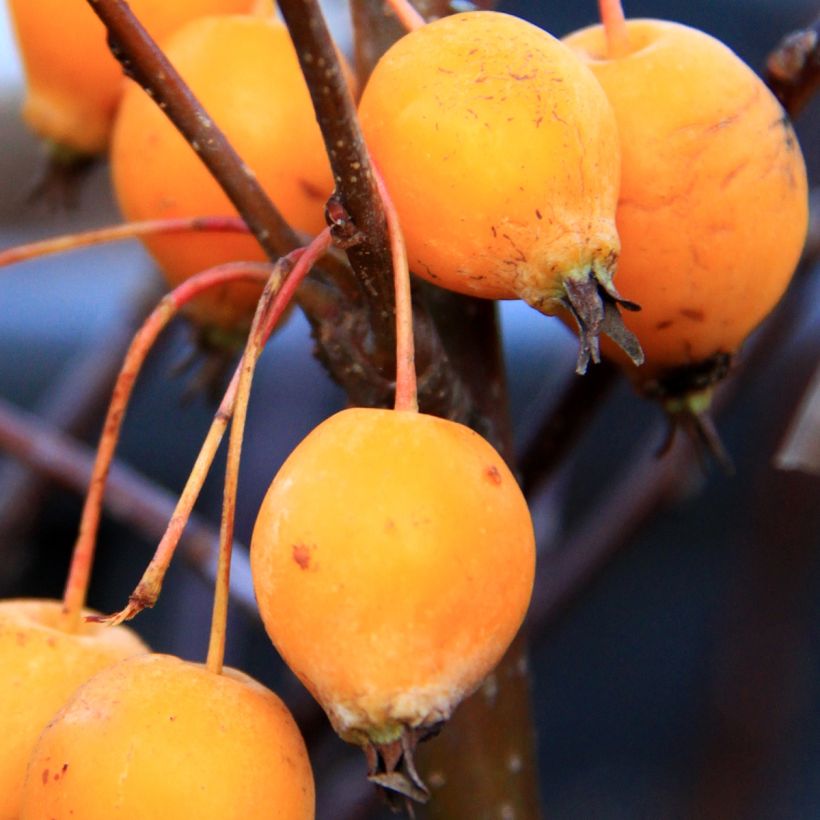

Plant habit
Flowering
Foliage
Botanical data
Malus
Comtesse De Paris
Rosaceae
Apple Tree, Crab Apple
Cultivar or hybrid
Other Malus - Crabapple
View all →Planting and care
Malus 'Comtesse de Paris' requires a bright, sunny exposure and high-quality soil that is deep, loose, rich, and well-drained, while remaining slightly moist. It tolerates limestone as well as slightly acidic soils if they are rich in humus. Dig a large planting hole. If your soil is poor, dig a generous planting hole, add plenty of good-quality compost, and apply fertiliser or compost at its base every spring.
After careful planting and regular watering during the first two years, it will generally take care of itself, but may suffer during hot and very dry summers. To ensure its full splendour, consider its mature size and give it enough space.
Planting period
Intended location
Care
Planting & care advice
-
, onOrder confirmed
Reply from on Promesse de fleurs
Haven't found what you were looking for?
Hardiness is the lowest winter temperature a plant can endure without suffering serious damage or even dying. However, hardiness is affected by location (a sheltered area, such as a patio), protection (winter cover) and soil type (hardiness is improved by well-drained soil).

Photo Sharing Terms & Conditions
In order to encourage gardeners to interact and share their experiences, Promesse de fleurs offers various media enabling content to be uploaded onto its Site - in particular via the ‘Photo sharing’ module.
The User agrees to refrain from:
- Posting any content that is illegal, prejudicial, insulting, racist, inciteful to hatred, revisionist, contrary to public decency, that infringes on privacy or on the privacy rights of third parties, in particular the publicity rights of persons and goods, intellectual property rights, or the right to privacy.
- Submitting content on behalf of a third party;
- Impersonate the identity of a third party and/or publish any personal information about a third party;
In general, the User undertakes to refrain from any unethical behaviour.
All Content (in particular text, comments, files, images, photos, videos, creative works, etc.), which may be subject to property or intellectual property rights, image or other private rights, shall remain the property of the User, subject to the limited rights granted by the terms of the licence granted by Promesse de fleurs as stated below. Users are at liberty to publish or not to publish such Content on the Site, notably via the ‘Photo Sharing’ facility, and accept that this Content shall be made public and freely accessible, notably on the Internet.
Users further acknowledge, undertake to have ,and guarantee that they hold all necessary rights and permissions to publish such material on the Site, in particular with regard to the legislation in force pertaining to any privacy, property, intellectual property, image, or contractual rights, or rights of any other nature. By publishing such Content on the Site, Users acknowledge accepting full liability as publishers of the Content within the meaning of the law, and grant Promesse de fleurs, free of charge, an inclusive, worldwide licence for the said Content for the entire duration of its publication, including all reproduction, representation, up/downloading, displaying, performing, transmission, and storage rights.
Users also grant permission for their name to be linked to the Content and accept that this link may not always be made available.
By engaging in posting material, Users consent to their Content becoming automatically accessible on the Internet, in particular on other sites and/or blogs and/or web pages of the Promesse de fleurs site, including in particular social pages and the Promesse de fleurs catalogue.
Users may secure the removal of entrusted content free of charge by issuing a simple request via our contact form.
The flowering period indicated on our website applies to countries and regions located in USDA zone 8 (France, the United Kingdom, Ireland, the Netherlands, etc.)
It will vary according to where you live:
- In zones 9 to 10 (Italy, Spain, Greece, etc.), flowering will occur about 2 to 4 weeks earlier.
- In zones 6 to 7 (Germany, Poland, Slovenia, and lower mountainous regions), flowering will be delayed by 2 to 3 weeks.
- In zone 5 (Central Europe, Scandinavia), blooming will be delayed by 3 to 5 weeks.
In temperate climates, pruning of spring-flowering shrubs (forsythia, spireas, etc.) should be done just after flowering.
Pruning of summer-flowering shrubs (Indian Lilac, Perovskia, etc.) can be done in winter or spring.
In cold regions as well as with frost-sensitive plants, avoid pruning too early when severe frosts may still occur.
The planting period indicated on our website applies to countries and regions located in USDA zone 8 (France, United Kingdom, Ireland, Netherlands).
It will vary according to where you live:
- In Mediterranean zones (Marseille, Madrid, Milan, etc.), autumn and winter are the best planting periods.
- In continental zones (Strasbourg, Munich, Vienna, etc.), delay planting by 2 to 3 weeks in spring and bring it forward by 2 to 4 weeks in autumn.
- In mountainous regions (the Alps, Pyrenees, Carpathians, etc.), it is best to plant in late spring (May-June) or late summer (August-September).
The harvesting period indicated on our website applies to countries and regions in USDA zone 8 (France, England, Ireland, the Netherlands).
In colder areas (Scandinavia, Poland, Austria...) fruit and vegetable harvests are likely to be delayed by 3-4 weeks.
In warmer areas (Italy, Spain, Greece, etc.), harvesting will probably take place earlier, depending on weather conditions.
The sowing periods indicated on our website apply to countries and regions within USDA Zone 8 (France, UK, Ireland, Netherlands).
In colder areas (Scandinavia, Poland, Austria...), delay any outdoor sowing by 3-4 weeks, or sow under glass.
In warmer climes (Italy, Spain, Greece, etc.), bring outdoor sowing forward by a few weeks.






























